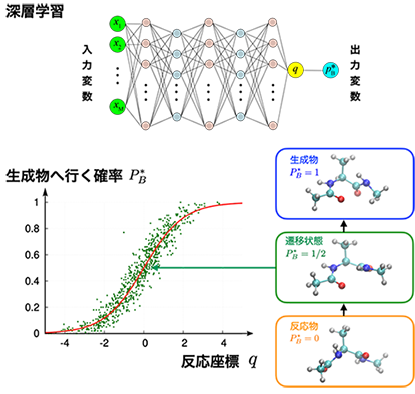異なる材料でできた結晶の薄い層を重ねることは、簡単ではない。「ダブエピタキシー」と呼ばれる技術がその一助となるのだろうか? Growing thin layers of crystals made from different materials on top of each other isn’t easy. Could a technique called ‘dative epitaxy’ help?
2022-04-19 バッファロー大学(UB)

A scanning transmission electron microscope image reveals a beautiful periodic pattern (called a “moiré pattern”) resulting from the epitaxial chromium telluride/tungsten diselenide superlattice; superimposed is the atomic model of the superlattice. Credit: Mengying Bian and Liang Zhu
バッファロー大学の物理学者Hao Zeng氏は、”dative epitaxyでは、材料間の弱い引力と、「dative bond」と呼ばれる時折生じる化学結合によって、異なる材料の層を結合させる。”この研究は、膜を重ねる新しい方法が、”半導体、量子技術、再生可能エネルギーの分野で広範囲に影響を及ぼす可能性がある “と言っています。
<関連情報>
- https://www.buffalo.edu/news/releases/2022/04/023.html
- https://onlinelibrary.wiley.com/doi/abs/10.1002/adma.202200117
共役van der Waalsモアレ超結晶の単結晶を用いた動的エピタキシャル成長 Dative Epitaxy of Commensurate Monocrystalline Covalent van der Waals Moiré Supercrystal
Mengying Bian,Liang Zhu,Xiao Wang,Junho Choi,Rajesh V. Chopdekar,Sichen Wei,Lishu Wu,Chang Huai,Austin Marga,Qishuo Yang,Yuguang C. Li,Fei Yao,Ting Yu,Scott A. Crooker,Xuemei M. Cheng,Renat F. Sabirianov,Shengbai Zhang,Junhao Lin,Yanglong Hou,Hao Zeng
Advanced Materials First published: 02 March 2022
DOI:https://doi.org/10.1002/adma.202200117
Abstract
Realizing van der Waals (vdW) epitaxy in the 1980s represents a breakthrough that circumvents the stringent lattice matching and processing compatibility requirements in conventional covalent heteroepitaxy. However, due to the weak vdW interactions, there is little control over film qualities by the substrate. Typically, discrete domains with a spread of misorientation angles are formed, limiting the applicability of vdW epitaxy. Here, the epitaxial growth of monocrystalline, covalent Cr5Te8 2D crystals on monolayer vdW WSe2 by chemical vapor deposition is reported, driven by interfacial dative bond formation. The lattice of Cr5Te8, with a lateral dimension of a few tens of micrometers, is fully commensurate with that of WSe2 via 3 × 3 (Cr5Te8)/7 × 7 (WSe2) supercell matching, forming a single-crystalline moiré superlattice. This work establishes a conceptually distinct paradigm of thin-film epitaxy, termed “dative epitaxy”, which takes full advantage of covalent epitaxy with chemical bonding for fixing the atomic registry and crystal orientation, while circumventing its stringent lattice matching and processing compatibility requirements; conversely, it ensures the full flexibility of vdW epitaxy, while avoiding its poor orientation control. Cr5Te8 2D crystals grown by dative epitaxy exhibit square magnetic hysteresis, suggesting minimized interfacial defects that can serve as pinning sites.



